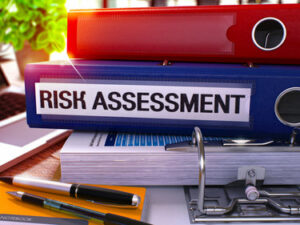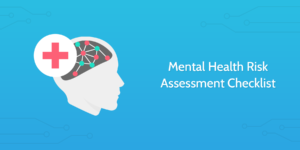As mental health becomes a growing concern in our modern world, the need for a comprehensive and effective mental health risk assessment in the workplace has never been more crucial. By identifying potential stressors and risks to employee well-being, employers can proactively implement strategies to create a supportive and healthy work environment. This blog will serve as a guide to understanding mental health risk assessment, outlining a template to streamline the process. And, also offer essential tips for organizations seeking to prioritize the mental health of their workforce.
Contents
- 1 What Does Mental Health Risk Assessment Mean?
- 2 Key Components Of An Effective Mental Health Risk Assessment Template
- 3 What Does A Mental Health Risk Assessment Include?
- 4 Benefits Of Using Mental Health Risk Assessment Template
- 5 Tips To Create A Mental Health Risk Assessment Template
- 6 Do EAPs Include This Template?
- 7 Conclusion
What Does Mental Health Risk Assessment Mean?
 Mental Health Risk Assessment refers to the process of systematically evaluating an individual’s or a group’s potential risk factors and vulnerabilities related to mental health within a specific context. Such as the workplace or educational setting. The primary goal of this assessment is to identify and address potential stressors, hazards, or situations. That may negatively impact mental well-being, and develop strategies to mitigate these risks.
Mental Health Risk Assessment refers to the process of systematically evaluating an individual’s or a group’s potential risk factors and vulnerabilities related to mental health within a specific context. Such as the workplace or educational setting. The primary goal of this assessment is to identify and address potential stressors, hazards, or situations. That may negatively impact mental well-being, and develop strategies to mitigate these risks.
By understanding the possible factors that contribute to mental health issues, organizations can proactively develop policies and support systems. Ultimately interventions to promote a healthy and supportive environment. This process helps protect the mental well-being of individuals. And also leads to improved overall productivity, job satisfaction, and organizational culture.
Key Components Of An Effective Mental Health Risk Assessment Template
An effective mental health risk assessment template should be comprehensive, user-friendly, and adaptable to different organizational settings. Here are some key components that should be included in such a template:
- Introduction and Context: Clearly outline the purpose and scope of the assessment, as well as the specific environment or population being assessed.
- Identification of Risk Factors: List potential risk factors and stressors that may impact mental health, such as work-related stress, workload, management styles, interpersonal relationships, or personal circumstances.
- Assessment of Vulnerabilities: Evaluate individual or group vulnerabilities, taking into account factors such as previous mental health issues, personal coping strategies, and access to support systems.
- Evaluation of Protective Factors: Identify the strengths and resources available to individuals or groups that can help mitigate mental health risks, including existing support networks, coping mechanisms, and organizational resources.
- Assessment Tools and Techniques: Include reliable and validated instruments or methods for assessing mental health risks, such as self-report questionnaires, interviews, or focus groups.
- Risk Mitigation Strategies: Based on the assessment findings, develop tailored interventions and strategies to address identified risks and promote mental well-being. Such as implementing employee assistance programs, offering mental health training, or adjusting workloads.
- Monitoring and Evaluation: Establish a process for regularly monitoring and evaluating the effectiveness of implemented strategies. And adjusting them as necessary to ensure continuous improvement.
- Documentation and Reporting: Provide clear guidelines for documenting the assessment process, findings, and recommendations. As well as communicating results to relevant stakeholders in a manner that respects confidentiality and privacy concerns.


 When creating a mental health risk assessment template, consider these five tips to ensure the template is effective and user-friendly:
When creating a mental health risk assessment template, consider these five tips to ensure the template is effective and user-friendly: